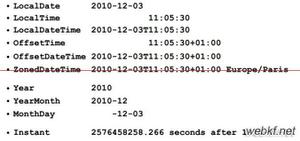Pandas时间序列:重采样及频率转换方式
如下所示:
import pandas as pd
import numpy as np
一、介绍
重采样(resampling)指的是将时间序列从一个频率转换到另一个频率的处理过程;
将高频率(间隔短)数据聚合到低频率(间隔长)称为降采样(downsampling);
将低频率数据转换到高频率则称为升采样(unsampling);
有些采样即不是降采样也不是升采样,例如将W-WED(每周三)转换为W-FRI;
二、resample方法–转换频率的主力函数
rng = pd.date_range('1/1/2000',periods=100,freq='D')
ts = pd.Series(np.random.randn(len(rng)),index=rng)
ts.resample('M').mean() # 将100天按月进行降采样(聚合)
2000-01-31 -0.156092
2000-02-29 0.060607
2000-03-31 -0.039608
2000-04-30 -0.154838
Freq: M, dtype: float64
ts.resample('M',kind='period').mean()
2000-01 -0.156092
2000-02 0.060607
2000-03 -0.039608
2000-04 -0.154838
Freq: M, dtype: float64
三、降采样(聚合)
1.降采样面元(区间)默认才有左闭右开的形式,而且聚合的索引是以左边界标记
rng = pd.date_range('1/1/2000',periods=12,freq='T')
ts = pd.Series(np.arange(12),index=rng)
ts
2000-01-01 00:00:00 0
2000-01-01 00:01:00 1
2000-01-01 00:02:00 2
2000-01-01 00:03:00 3
2000-01-01 00:04:00 4
2000-01-01 00:05:00 5
2000-01-01 00:06:00 6
2000-01-01 00:07:00 7
2000-01-01 00:08:00 8
2000-01-01 00:09:00 9
2000-01-01 00:10:00 10
2000-01-01 00:11:00 11
Freq: T, dtype: int32
ts.resample('5min').sum()
2000-01-01 00:00:00 10
2000-01-01 00:05:00 35
2000-01-01 00:10:00 21
Freq: 5T, dtype: int32
2.通过参数closed='right'可以实现左开右闭
ts.resample('5min',closed='right').sum()
1999-12-31 23:55:00 0
2000-01-01 00:00:00 15
2000-01-01 00:05:00 40
2000-01-01 00:10:00 11
Freq: 5T, dtype: int32
3.通过参数label='right'可以实现以右边界为聚合后的标签
ts.resample('5min',closed='right',label='right').sum()
2000-01-01 00:00:00 0
2000-01-01 00:05:00 15
2000-01-01 00:10:00 40
2000-01-01 00:15:00 11
Freq: 5T, dtype: int32
4.通过参数loffset可以实现精准的调整标签
ts.resample('5min',closed='right',loffset='-1s').sum()
1999-12-31 23:54:59 0
1999-12-31 23:59:59 15
2000-01-01 00:04:59 40
2000-01-01 00:09:59 11
Freq: 5T, dtype: int32
四、OHLC重采样
在金融领域常用的聚合方式–OHLC,它会计算各个面元的:第一个值(开盘)、最后一个值(收盘)、最大值和最小值,并产生一个DataFrame
print(ts.resample('5min').ohlc())
open high low close
2000-01-01 00:00:00 0 4 0 4
2000-01-01 00:05:00 5 9 5 9
2000-01-01 00:10:00 10 11 10 11
五、通过groupby进行重采样
rng = pd.date_range('1/1/2000',periods=100,freq='D')
ts = pd.Series(np.arange(100),index=rng)
ts.groupby(lambda x:x.month).mean() # 等价于 ts.groupby(rng.month).mean()
1 15
2 45
3 75
4 95
dtype: int32
ts.groupby(lambda x:x.weekday).mean() # 按周聚合
0 47.5
1 48.5
2 49.5
3 50.5
4 51.5
5 49.0
6 50.0
dtype: float64
六、升采样和插值
升采样是从低频率到高频率,这样会引入缺失值;
升采样时需要决定采样后结果中具体那个值代替原始的值;
当决定了替换原始值的值后,中间的值会按照频率进行添加;
frame = pd.DataFrame(np.random.randn(2,4),
index = pd.date_range('1/1/2000',periods=2,freq='W-WED'),
columns = ['Colorado','Texas','New York','Ohio'])
print(frame)
Colorado Texas New York Ohio
2000-01-05 -0.078765 1.389417 0.732726 0.816723
2000-01-12 -0.663686 0.744384 1.395332 -0.031715
1.升采样、前向填充
df_daily = frame.resample('D')
print(df_daily.ffill())
Colorado Texas New York Ohio
2000-01-05 -0.078765 1.389417 0.732726 0.816723
2000-01-06 -0.078765 1.389417 0.732726 0.816723
2000-01-07 -0.078765 1.389417 0.732726 0.816723
2000-01-08 -0.078765 1.389417 0.732726 0.816723
2000-01-09 -0.078765 1.389417 0.732726 0.816723
2000-01-10 -0.078765 1.389417 0.732726 0.816723
2000-01-11 -0.078765 1.389417 0.732726 0.816723
2000-01-12 -0.663686 0.744384 1.395332 -0.031715
print(df_daily.ffill(limit=2))
Colorado Texas New York Ohio
2000-01-05 -0.078765 1.389417 0.732726 0.816723
2000-01-06 -0.078765 1.389417 0.732726 0.816723
2000-01-07 -0.078765 1.389417 0.732726 0.816723
2000-01-08 NaN NaN NaN NaN
2000-01-09 NaN NaN NaN NaN
2000-01-10 NaN NaN NaN NaN
2000-01-11 NaN NaN NaN NaN
2000-01-12 -0.663686 0.744384 1.395332 -0.031715
2.重采样后的日期不一定与先前的日期有交集
print(frame)
Colorado Texas New York Ohio
2000-01-05 -0.078765 1.389417 0.732726 0.816723
2000-01-12 -0.663686 0.744384 1.395332 -0.031715
print(frame.resample('W-THU').ffill()) # 重采样后的结果开始为全NaN,使用ffill会使用2000-01-05和2000-01-12的值向前填充
Colorado Texas New York Ohio
2000-01-06 -0.078765 1.389417 0.732726 0.816723
2000-01-13 -0.663686 0.744384 1.395332 -0.031715
七、通过时期(period)进行重采样
1.将采样
frame = pd.DataFrame(np.random.randn(24,4),
index = pd.period_range('1-2000','12-2001',freq='M'),
columns = ['Colorado','Texas','New York','Ohio'])
print(frame[:5])
Colorado Texas New York Ohio
2000-01 -1.956495 -0.689508 0.057439 -0.655832
2000-02 -0.491443 -1.731887 1.336801 0.659877
2000-03 -0.139601 -1.310386 -0.299205 1.194269
2000-04 0.431474 -1.312518 1.880223 0.379421
2000-05 -0.674796 0.471018 0.132998 0.509761
annual_frame = frame.resample('A-DEC').mean()
print(annual_frame)
Colorado Texas New York Ohio
2000 -0.332076 -0.762599 0.046917 0.224908
2001 -0.152922 0.168667 -0.326439 -0.052034
2.通过convention决定在升采样后,那端来替换原来的值
# Q-DEC:以12月做为最后一个季度的最后一个月进行升采样.也就是1-3月是1季度,4-6月是2季度,7-9月是3季度,10-12月是4季度
print(annual_frame.resample('Q-DEC').ffill())
Colorado Texas New York Ohio
2000Q1 -0.332076 -0.762599 0.046917 0.224908
2000Q2 -0.332076 -0.762599 0.046917 0.224908
2000Q3 -0.332076 -0.762599 0.046917 0.224908
2000Q4 -0.332076 -0.762599 0.046917 0.224908
2001Q1 -0.152922 0.168667 -0.326439 -0.052034
2001Q2 -0.152922 0.168667 -0.326439 -0.052034
2001Q3 -0.152922 0.168667 -0.326439 -0.052034
2001Q4 -0.152922 0.168667 -0.326439 -0.052034
# 使用2000Q4替换2000、2001Q4替换2001,这两个值2000Q4和2001Q4之间就是升采样新增的值
print(annual_frame.resample('Q-DEC',convention='end').ffill())
Colorado Texas New York Ohio
2000Q4 -0.332076 -0.762599 0.046917 0.224908
2001Q1 -0.332076 -0.762599 0.046917 0.224908
2001Q2 -0.332076 -0.762599 0.046917 0.224908
2001Q3 -0.332076 -0.762599 0.046917 0.224908
2001Q4 -0.152922 0.168667 -0.326439 -0.052034
3.综合案例解析
Q-MAR:4-6月是1季度,7-9月是2季度,10-12月是3季度,1-3月是4季度;
2000-01到2000-03是2000Q4,2000-04到2000-6是2001Q1,以此类推;
2000转变为[2000Q4,2001Q1,2001Q2,2001Q3],2001转变为[2001Q4,2002Q1,2002Q2,2002Q3];
convention='end',那么会使用2001Q3替换原始的2000,2002Q3替换2001,中间的部分自动添加;
索引结果为[2001Q3,2001Q4,2002Q1,2002Q2,2002Q3];
print(annual_frame.resample('Q-MAR',convention='end').ffill())
Colorado Texas New York Ohio
2001Q3 -0.332076 -0.762599 0.046917 0.224908
2001Q4 -0.332076 -0.762599 0.046917 0.224908
2002Q1 -0.332076 -0.762599 0.046917 0.224908
2002Q2 -0.332076 -0.762599 0.046917 0.224908
2002Q3 -0.152922 0.168667 -0.326439 -0.052034
以上这篇Pandas时间序列:重采样及频率转换方式就是小编分享给大家的全部内容了,希望能给大家一个参考,也希望大家多多支持。
以上是 Pandas时间序列:重采样及频率转换方式 的全部内容, 来源链接: utcz.com/z/332434.html






